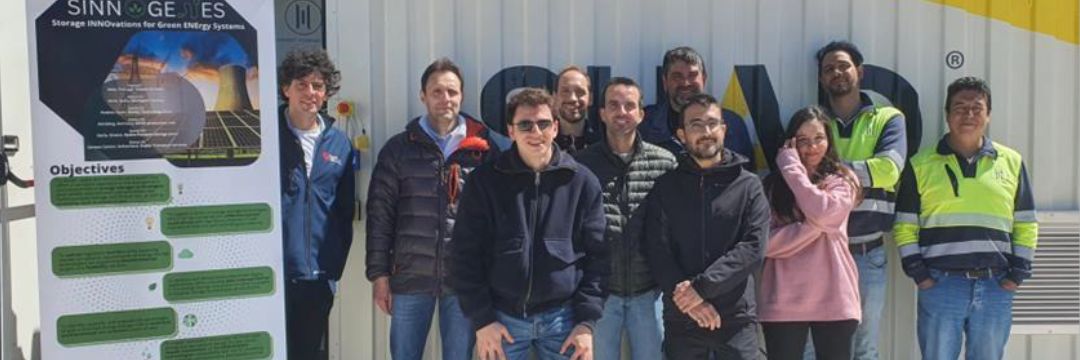Demo Soria: Decoupling converter installed in the CEDER-CIEMAT microgrid of Lubia
CEDER-CIEMAT microgrid is reinforced with an exclusive power electronic converter capable of varying the frequency and voltage of the 15kV grid.
The CEDER-CIEMAT, located in Lubia, experienced on Thursday, April 11th, the day when the inaugural tests of a decoupling converter were conducted, marking a milestone in the control and stability capacity of the electrical grid.
The company Hess Ric supplied and installed this innovative decoupling power electronics equipment, designed to be capable of varying the frequency and potential difference of a medium-voltage grid. Additionally, with the connection of external battery energy storage, it will also be able to generate a stand-alone grid operating at a medium voltage of 15 kV. The total contract amount for this project is 535,909 euros.
The Hesstec team conducted the commissioning tests of the equipment on the 15 kV grid and demonstrated the effective operation of the converter. With capabilities beyond voltage and frequency stabilization, this device represents a significant advancement in active and reactive power flow management within the system.
During the commissioning tests, in which researchers from the Department of Energy and the Electric Drives unit of the Department of Technology of CIEMAT, participated, a comprehensive series of tests was conducted to assess its performance under various conditions.
The tests commenced by evaluating the system’s capability to control power flow, both active and reactive, across all four quadrants while operating connected to the main grid. Subsequently, power factor correction was adjusted in connection mode to the main grid, demonstrating its versatility and adaptability to various demands.
Additional tests were conducted to control active and reactive power, employing a zero-slope ramp, with no variation in frequency and voltage, enabling an assessment of its responsiveness. Following this, the system was disconnected from the main grid (islanded operation) and operated under stand-alone frequency and voltage regulation mode with a specific ramp, during which key parameters were adjusted and the system’s dynamic response was evaluated. Furthermore, frequency or voltage profiles were loaded and executed in islanded mode, providing a comprehensive scenario of independent operation.
SINNOGENES project has progressed through three key phases. The first involved the delivery of the execution project, detailing technical and budgetary aspects. During the second phase, the equipment was validated and delivered to the CEDER, following verification of its proper operation at the manufacturer’s facilities.
Finally, during the third period, installation, commissioning, and acceptance testing was completed, culminating in legalization before the competent authority. The equipment architecture features a sophisticated structure incorporating two transformers to facilitate voltage conversion between medium and low voltage levels. Additionally, it consists of two conversion stages: a bidirectional alternating/direct current (AC/DC) power electronic converter and a bidirectional DC/AC converter, strategically interconnected to ensure optimal and safe operation.
Among its notable functionalities are automatic control of frequency and voltage evolution based on measured power, as well as direct control of active and reactive power. Moreover, the equipment offers the capability to emulate the inertia of a synchronous generator or a grid, and to perform power factor correction at the connection point. An additional feature is the ability to inhibit the AC/DC converter, allowing the DC/AC converter to operate in islanded mode and generate a stand-alone network with variable voltage and frequency from the voltage of the intermediate DC stage.



